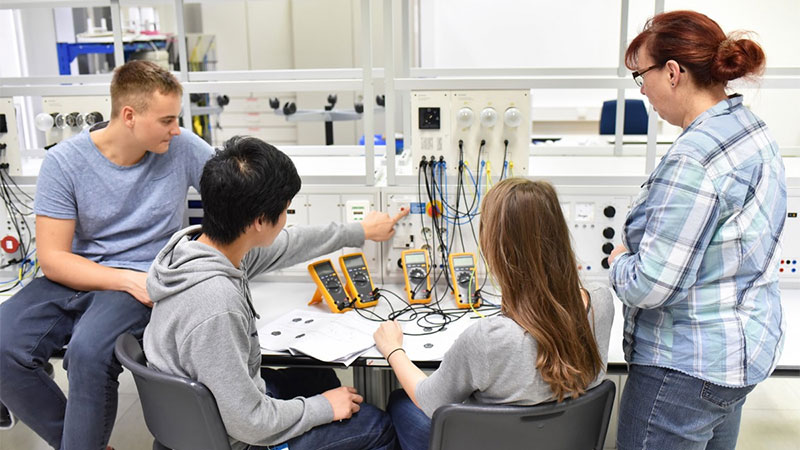How will we assess learning ─ and make sure it counts in the workplace ─ in 2030 and beyond?
That’s the important question we asked during a recent discussion hosted by the Institute for the Future (IFTF) and Lumina Foundation. We were joined in Palo Alto, California, by 50 experts from workforce boards, business, education, nonprofits, government, and investment funds.
We came up with some novel answers and approaches to help Americans get credit for new ways of learning and sharpening their skills. We also realized there is no time to waste.
Our discussion was grounded in the growing recognition that learning in the future will come from multiple sources: educational institutions, work, military, self-study, civic engagement, and more. Until now, our view of work and learning has been: “go to school and then work.” But that view is quickly changing to a blending of work and learning. Instead of one or the other, we will do both at the same time. This is beginning to happen all around us.
But we face a major problem: we do not have broadly reliable, trusted ways to assess learning and make sure it counts in the workplace. Assessing learning ─ measuring what we know and can do ─ becomes ever more important in the rapidly changing workplace of the future.
Two key questions and nine “archetype” learner personas
To delve into the assessment dilemma of 2030 and beyond, IFTF suggested we start with two key questions: Who will be the workers of the future? And how will we help them reach their true potential?
To consider these questions, the group identified several emerging signals and future trends for 2030: We will see smarter technologies; new ways of working, earning, and contributing to our communities; more global connections; and more income inequity. These add up to bigger challenges for the planet and for all of us.
IFTF helped the group think about the future of assessing learning by creating a shared picture of the workforce of 2030, drawing on its Future of Workmaps and Future of Learning maps. IFTF researchers also reported on recent in-depth interviews with gig workers around the U.S., and ethnographic interviews with 60 leading learners from six cities around the world: Austin, Berlin, Chongqing, Jeddah, Lagos, and Mexico City.
The research resulted in the identification of nine archetype personas of future worker-learners for whom we can design learning today ─ in anticipation that many learners will fall within the nine archetypes. These types of future learners were presented to help the group imagine the range of new work-and-learn pathways. For instance, one such learner was dubbed the Climate Changer, someone developing skill sets needed to help communities adapt to environmental upheaval ─ skill sets such as environmental data analysis, community reconstruction, disaster relief training, and emergency medical training.
We then imagined the types of new tools, approaches, and services that tomorrow’s learners will need ─ and how that learning might be measured. Clearly, today’s tools won’t be enough, because the future is going to be filled with unexpected tasks and quick turnaround times. So, traditional standardized tests or homework scores will no longer tell who is ready for work.
New, high-tech approaches
We’re already seeing new assessment platforms and pathways emerging to measure learning wherever and whenever it occurs. Four scenarios for assessing individuals’ strengths are particularly emerging:
- Recommender systems that reveal our potential the same way we build profiles on Netflix, by recommending paths to the future. Think predictive analytics and expanded opportunities for learning recommended to us by systems that review our profiles.
- Social learning as an assessment approach, where our networks give us ratings and technology helps track our learning as well as our emotional responses.
- Data systems that find our potential in graphs of daily interactions and actions. Think scenarios and data measurements becoming a more developed, widely used way to depict our personal data.
If these four approaches constitute the future of assessment, what kinds of services will we create ─ and trust ─ to turn them into actionable plans for building our individual potential?
IFTF answers tough questions like these by thinking about today and the future as two intersecting curves. One curve, the growth curve, is headed up; it is tomorrow’s way of doing things. The downward-trending curve represents today’s way of doing things. The curves cross each other and, at some point, we all must live on both curves at the same time ─ and decide when to leap to the future curve.
The experts in Palo Alto identified many approaches to be developed on thegrowth curve, such as gaming to discover strengths, simulation-based assessments, recommendations through new networks of social media, on-demand micro-assessments at scale, and sensor/measurement tools to assess knowledge and skills (think facial recognition systems, brain sensors).
No time to waste; the future is here
With new approaches come even more questions. But this much is certain: No field will be more affected by the future of learning and work than the assessment of learning. In a fast-changing workforce, it will be critically important to quickly assess what people know and can do. We must create tools that are reliable, trusted, widely available, and, most of all, flexible enough to assess learning that will come from many sources for people in all walks of life.
Working together, we are up to the challenge. And there is no time to waste.
